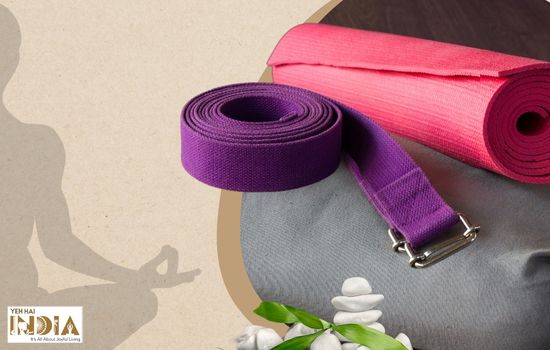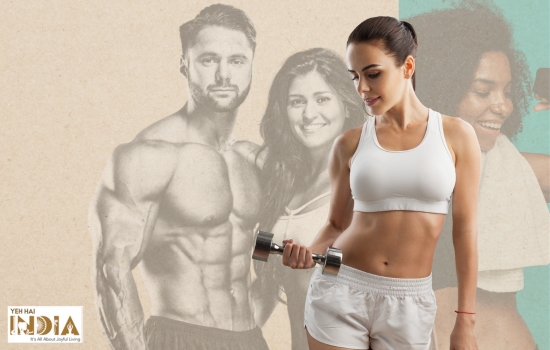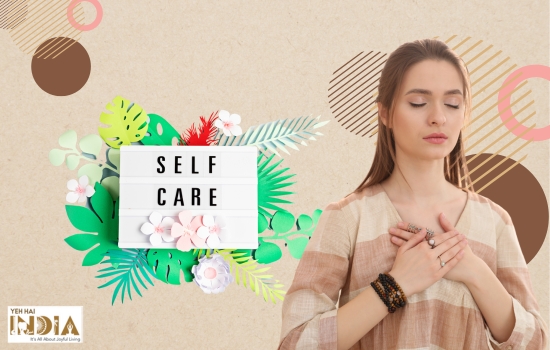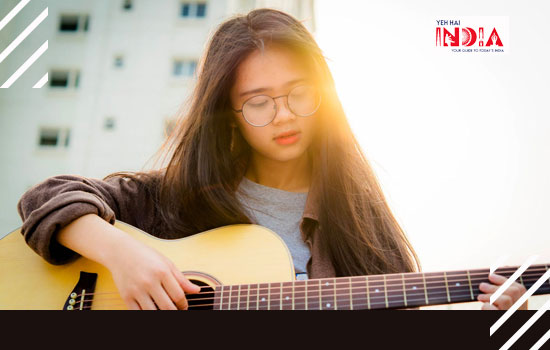Using props in your yoga practice can help you master the asanas effectively and at a faster pace.
Yoga has gained much-deserved popularity among the current generation as a form of physical exercise in recent years. There have been modifications to the standard traditional practises to fit the practitioner as well.
Traditionalists of any breed are generally opposed to change, especially if it plays an important role in evolution or diversification. The use of properties in yoga is one such point of contention between traditional and modern yoga practitioners.
Once upon a time, in the pre-Covid era, teaching, learning, and practising yoga happened in a room with a teacher to guide you through the poses. These days, not much happens offline, and that has not passed over yoga sessions either.
Individual and group sessions take place over video calls and Zoom meetings, with the guru’s voice helping and guiding through the poses.
Without the guru present in person to hold up your leg or move your back just a little to correct your pose, it is slightly difficult to get the asanas perfect.
Beginners and experienced practitioners alike face this issue at one point or another when they are trying to master the different asanas. This is where the properties come in.
Introduced by the famed Yogacharya BKS Iyengar of Pune, Iyengar Yoga, or the inclusion of different props in the practice of yoga makes it possible for everyone to experience the yoga sutra without difficulty.
BKS Iyengar initiated the use of props like wooden blocks, chairs, belts, and ropes to help any practitioner learn an asana perfectly.
Why Should You Include Props In Yoga Practice?

- Props give you more stability and freedom to get into the flow of positions when you are a beginner
- They are excellent tools for teaching yoga and offer the space for students to ease into the poses, and feel the body align itself without having to do it by themselves right from the very first time
- Props also provide excellent support to your body when you are trying to improve its flexibility
- They also help people with injuries, health conditions or limitations practise yoga safely
- Props aid in personalising the practice
- They allow you to breathe more deeply and relax more easily
- Props calm the mind and encourage experimentation
- They aid in the cultivating comfort in mind as well as in your body with proper support and stability
Types of Yoga Props:
- Straps
- Blocks
- Mats
- Wedges
- Bolsters
- Blankets
- Chairs
- Walls
- Ropes
Read more to learn how these props can be used to help you through your daily yoga practice.
1. Straps

Yoga straps are a helpful tool for increasing flexibility or opening up tight muscles. A strap can be used to help newer students with a forward fold. When performing a forearm stand, or Pincha Mayurasana, a strap can be used to support the arms.
Straps are extremely useful for simple side stretches; simply place the strap over your head and gently move from left to right.
When you have tight hamstrings, yoga straps are ideal. Wrap a strap around the balls of your feet and hold one side of the strap in each hand in a seated forward fold.
Pull yourself towards your feet with the straps, keeping a straight back rather than hunching over to force the pose.
You can find really affordable yoga straps on e-commerce sites for as low as Rs 300-400.
2. Blocks

Yoga blocks are a popular type of yoga prop. Do you ever start your practice with your toes barely touching the ground? This indicates that your hamstrings are tight, and a yoga block is a simple remedy to help relax your mind while you generate heat and awaken your limbs.
In Trikonasana, for example, place a block on the outside of your front leg and rest your bottom hand on it. Start with the block at its tallest point, then gradually work your way down to the middle or lowest point before you can reach the floor with your bottom hand.
The Matsyasana is another excellent example. You can melt away stress held in your shoulders and back by lying on the block. Reviving a part of the body where energy can become stagnant and dull
Different types of blocks, such as foam blocks, are lighter and have more cushioning. The disadvantage is that they are unstable and not recommended for use in standing poses.
Amazon sells yoga blocks in pairs for Rs 600 after the offer.
3. Mats
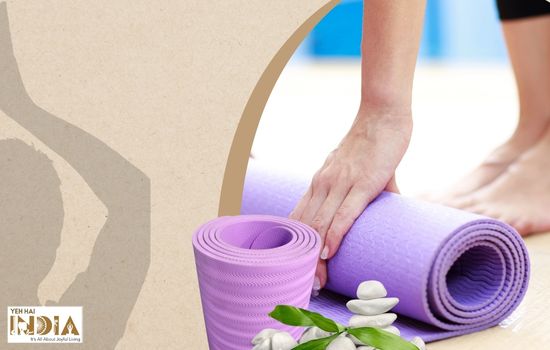
Mats are the most important yoga props that provide a grippy surface for poses and cushioning for body parts that come into contact with the floor. Some mats even include guidelines for proper pose alignment.
Mats are available in various thicknesses; a thinner mat aids in stability during active and balanced yoga poses, whereas a thicker mat is best for therapeutic poses and can provide comfort for people with achy joints.
Yoga mats are available almost everywhere from your local supermarket to online websites. Vifitkit has yoga mats that are popular on e-commerce sites. Their mats are eco-friendly and designed with anti-slip technology.
4. Wedges
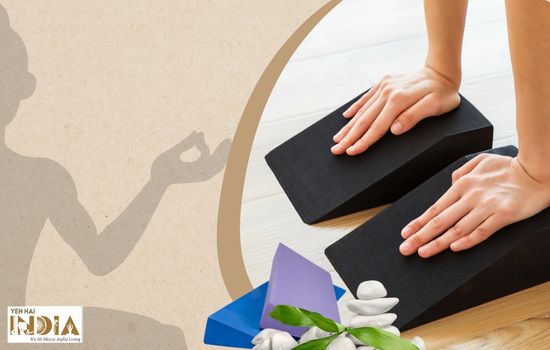
Yoga wedges are tapered yoga blocks that can change the angle of your hands, feet, or pelvis on the mat. Wedges provide joint support and can help people with arthritis or plantar fasciitis.
A wedge can help you relieve pressure on your wrist if you have a wrist injury by angling the heel of your hand. Yoga Wedges are also pretty expensive compared to other props.
Panfikh is an Indian sports accessories brand that offers wedges for Rs 790 on Amazon and Flipkart. Wedges from most other brands cost more than Rs 3000.
5. Bolsters & Pillows

The additional cushioning, ranging from small pillows to large bolsters, is ideal for restorative poses, which are typically held for several minutes. As with blocks, you may need to experiment with different sizes to find the most comfortable support in each pose.
Pillows can add cushioning or space, making many poses more accessible or comfortable. If your pillows are too flat or small for some poses, a bolster can provide additional support.
Pillows and bolsters can be used in numerous ways. For example, place it under each leg in Baddha Konasana or Supta Baddha Konasana. In Virasana or Kapotasana, place your hands under your seat. In Supta Matsyendrasana, place your legs on the pillows.
Kanyoga, a Delhi-based brand offers all yoga accessories and props on their website and also on other online websites.
6. Blankets

This is a simple yoga prop for beginners that you can find at home. Folded blankets can be used to raise the hips in seated poses and to provide support in lying poses. When we sit cross-legged, we can lift our hips above our knees using a blanket under the sit bones.
You can use any soft, thick blanket or towel that works for you. These blankets not only act as props but also maintain warmth during a colder climate that makes floors chilled.
7. Chairs

Folding chairs can be great props and teaching tools. Position the chair on the mat with its back to the wall. The front legs of the chair can be held for support. Come into Ardha Pincha Mayurasana by lifting your knees.
Kick both feet up against the wall when you are ready. The chair then provides you with various platforms to lower your feet onto as you practise the deep backbend poses in stages.
8. Walls

You can also use the wall for support in various different asanas. Let’s look at a few poses and how you can use the wall to easily attain these poses.
- Baddha Konasana

Put your feet together and open your knees. Place the outside edges of your feet against the wall. If you want to feel more stretch, extend your arms wide along the floor or lightly press your hands into your knees.
- Malasana
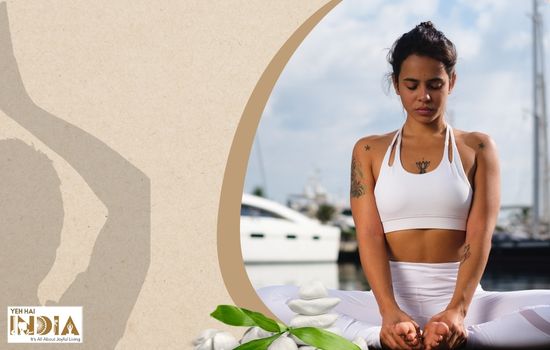
Plant your feet wider than hip distance apart into the wall. Knees should be bent at a right angle or as much as you can. This, like the bats and sloths hanging upside down, releases joint tension and deeply stretches the entire muscular-skeletal body.p
- Maksikanagasana

This is similar to the Viparita Karani pose but here the legs are spread open and the heels of the feet rest flatly on the wall.
- Supta Matsyendrasana
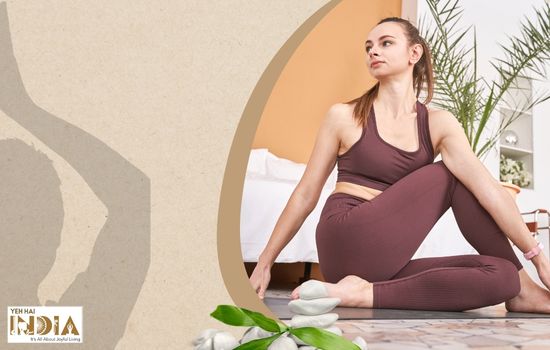
Return your legs to the centre, knees bent, and feet on the wall. Cross your right knee over your left. Allow your knees to fall to the left. If necessary, place a block or pillow between your knee and the floor. Hold for a few breaths before repeating on the opposite side.
- Viparita Karani
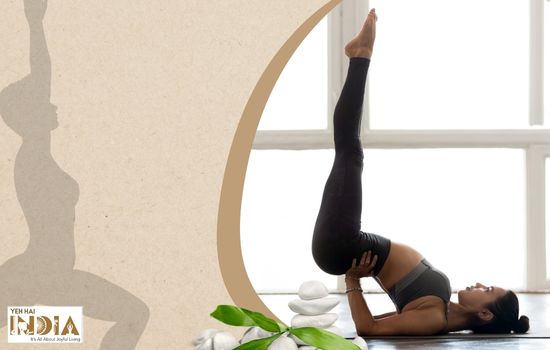
Position your legs to the centre of the wall and uncross them. Extend your legs along the wall, the soles of your feet facing up. Make any necessary adjustments to completely relax and stay here for 1-12 minutes.
9. Ropes

Rope poses are particularly beneficial for spine health because they use traction to relieve pressure on vertebral discs, which soothes compressed nerves and calms the mind.
They can also be used to make deep openings in the organic body, increasing extracellular fluid and blood flow to the organs and tissues.
Yoga ropes are reinforced and very durable to make sure they offer the required support to the body. Yoga Nation is a Pune-based brand that offers wall ropes ranging from Rs 799 to Rs 1,499. Check out their products here.
Amazon has Fitsy’s Aerial Suspension Yoga Ropes in cotton for a price of Rs 2,899. You can find them here.
Let us know if you liked this article and our suggestions.
Also Read- Yoga Postures For Muscle Building


